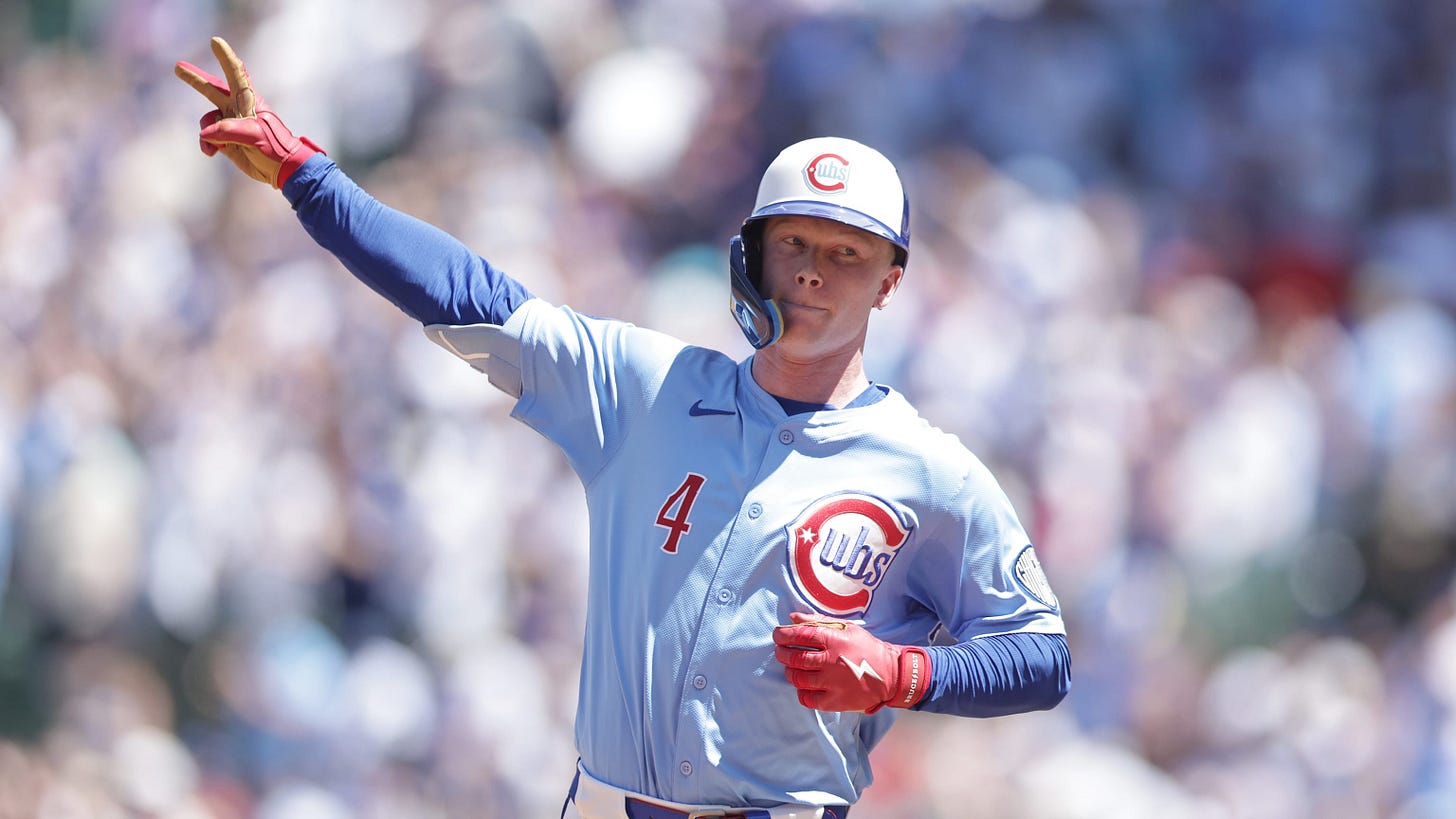What the 2025 Run Environment Means for Fantasy Baseball
The League Keeps Changing. Here's How to Stay Ahead.
Back in What I Learned from Building My 2025 Projections… in June, I wrote about developing a year-round mind for fantasy baseball. The best decisions, from your first-round pick to September waiver adds, should flow from one connected, process-driven view of the game.
That includes knowing the player pool. It also means understanding the macro environment—the league-wide forces that shape seasons. I haven’t always nailed it, but viewing fantasy this way has been an edge in recent years, ever since the Juiced Ball Era.
And yet, I get it. Predicting which ball MLB is using or how a hidden rule tweak might ripple through the game can feel like chasing ghosts. In 2025 alone, we’ve got a smaller strike zone and the most drag on the ball in the Statcast era.
As The Athletic explained about the strike zone, the league’s new umpire evaluation system “significantly decreased the margin of error for umpires in their evaluations — and has resulted in fewer called strikes off the edges of the plate through the same point as last season.” The kicker? “No players interviewed could recall being informed before the season that this was coming by their teams, the MLB Players Association, or the league.”
We’ve now experienced seven straight seasons of structural change:
2019: Super juiced ball, rampant use of sticky stuff
2020: Shortened season, no minors
2021: Sticky stuff ban, disrupted spring
2022: Lockout, deadened ball, universal DH
2023: Pitch clock, shift ban, bigger bases
2024: Adjustments to rule changes
2025: Smaller strike zone, most drag on the ball in a decade
It’s been chaotic. But if we zoom out, a pattern emerges. And for fantasy players, this matters a lot.
Let’s trace the arc of change and lay the groundwork to win this summer, while also building leverage for 2026 and beyond.
Below is a table that shows relevant, league-wide stats over the past decade-plus:
It’s easiest to break this up into mini eras, beginning with the home run boom. From 2015 to 2019, home runs per game rose nearly 40%. Homers per fly ball also spiked considerably, leading to many questions (and fewer answers) about why this was happening.
Strikeouts rose, but batting average held steady. This created a specific run environment where power was plentiful, even as contact eroded. Twenty-homer bats became common as power was available later in drafts and via waivers. That had ripple effects as stolen bases felt even scarcer by comparison. It wasn’t because they declined, but more because they weren’t keeping up.
On the pitching side, inflated ratios became the norm, but strikeouts emerged as the key differentiator. 2019 might’ve been the last season where elite starters truly separated. Justin Verlander and Gerrit Cole delivered two of the most dominant roto seasons in my database, which spans over a decade.
2020-21: Transition Years
The 60-game pandemic season broke continuity. Minor league development stalled. HR/FB held near peak levels, but with so little context, it was hard to know what mattered. Strikeouts hit a record high. Everything felt slightly off.
Then came 2021. Offense cooled overall, though not dramatically. HR/FB dipped to 13.6%. Strikeouts initially stayed elevated. Midseason, MLB banned sticky stuff, triggering a new layer of instability. Spin rates dropped, but the effects were uneven. Batting average was down for the second straight year, and contact quality felt harder to trust. It wasn’t clear what kind of offense MLB was trying to engineer.
For fantasy, this stretch was tough to anchor. The power surge no longer felt bankable. Ratios fluctuated. Players missed reps. Projection systems were playing catch-up. The only constants were volatile environments and shifting baselines.
2022-25: The Recalibration Era
By 2022, the ball was deadened again. HR/FB dropped to its lowest mark since 2015. Run scoring fell. Contact rates didn’t improve much, but the shape of offense began to shift.
Then came 2023. The impact of MLB’s sweeping rule changes was immediate. Stolen bases per game grew by over 40% year over year. Strikeouts finally plateaued. And for the first time in years, fantasy value wasn’t just concentrated in power. Players who ran while still clearing a modest power threshold became the most valuable assets in fantasy. You didn’t need 35 homers anymore—15–20 with 25+ steals and a passable average played everywhere.
That’s held through 2025, at least so far. We’re not through June yet, so some of these numbers could shift. But the directional trends appear real. HR/G is down 20% from the 2019 peak. Stolen bases are up nearly 60% since 2021. Batting average and BABIP have stabilized below historical norms. And while run scoring fluctuates, the trendline points lower, driven by fewer home runs and increasingly efficient pitching and defense.
This is the recalibrated, more balanced league. And for fantasy players, it requires a redefinition of what value looks like.
Next week, we’ll discuss what this means in relation to a 2026 lookahead.



